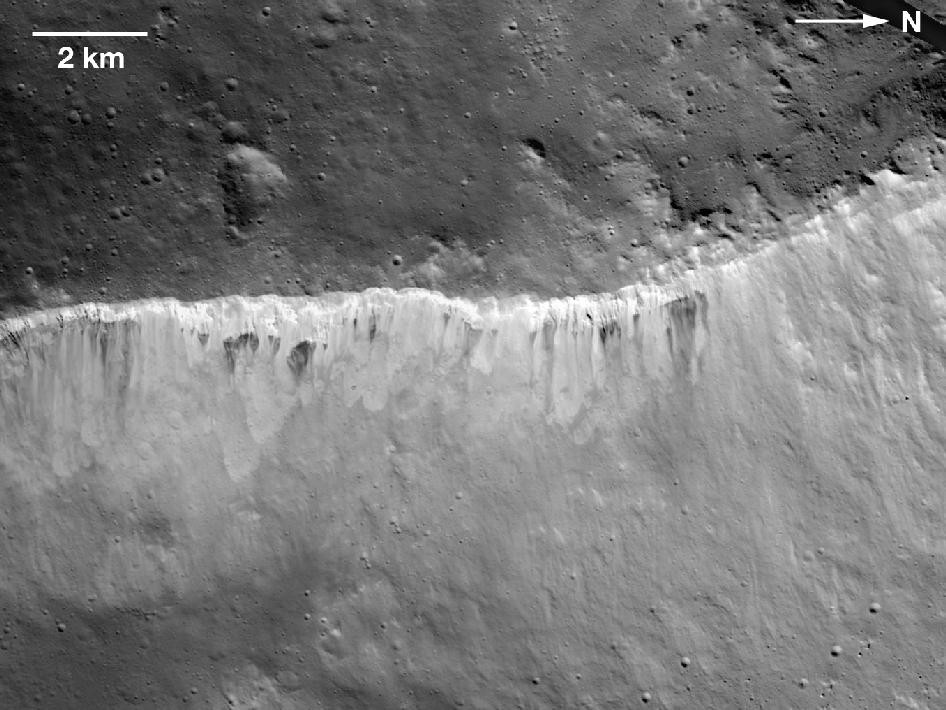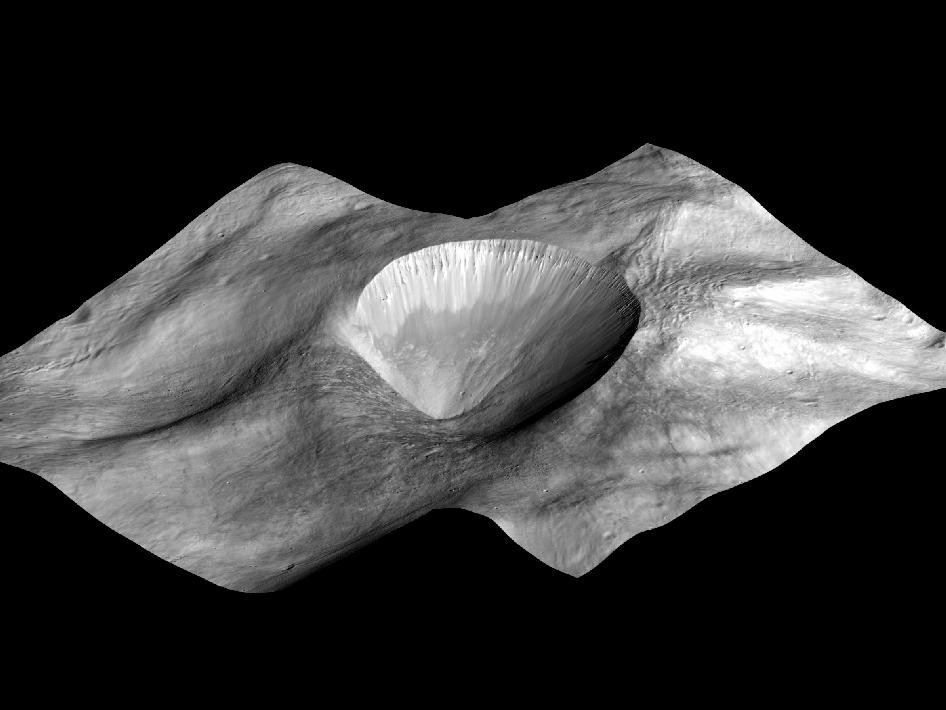Mysterious Bright Spots Discovered on Giant Asteroid Vesta
Nasa's Dawn spacecraft has revealed mysterious bright spots on the surface of the giant asteroid Vesta.
Scientists from the Nasa, Arizona State University and the University of Maryland have discovered huge bright spots on Vesta. They have found some areas on Vesta to be nearly twice as bright as others. They believe these white spots provide clues about the asteroid's history.
Vesta is one of the brightest objects in the solar system and the only asteroid in the so-called main belt between Mars and Jupiter visible to the naked eye from Earth.
Scientists found that these mysterious bright spots were most predominant in and around craters. The areas vary from several hundred feet to around 10 miles (16 km) across. They believe that these mysterious bright spots were exposed when rocks came crashing down on the surface of Vesta. This impact might have revealed bright surfaces.
Scientists believe that several years ago some carbon-rich asteroids could have hit Vesta's surface and melted the volcanic basaltic crust, thus darkening the existing surface material. Thus when some rocks crashed on the surface of Vesta it revealed the ancient bright surface of the asteroid.
"One of the surprises was the dark material is not randomly distributed," said David Williams, a scientist at Arizona State University, Tempe. "This suggests underlying geology determines where it occurs."
"Our analysis finds this bright material originates from Vesta and has undergone little change since the formation of Vesta over 4 billion years ago," said Jian-Yang Li, scientist at the University of Maryland, College Park. "We're eager to learn more about what minerals make up this material and how the present Vesta surface came to be."




© Copyright IBTimes 2025. All rights reserved.





















